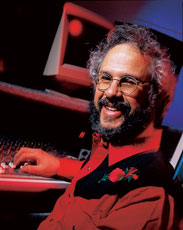By Steve Oppenheimer
(May 2002)
When I was an undergraduate student, one of my professors had a saying that has helped me again and again over the years: Periodically, you have to step back from whatever you are doing and ask yourself, “Who gives a rat’s ass?”
Pithy, yes, but words to live by. If no one except the creator cares about a project, there’s little point in pursuing it for public release. Of course, one can still create art for art’s sake or just for fun; I’m talking about projects meant for public consumption.
That applies to any sort of project, product, or service. For instance, I’ve directed EM‘s editors to apply the “rat’s ass” test to our articles: each story should tell you, directly or indirectly, why you might care about a particular product, technology, or applications tip.
We can apply the relevancy test to new technology, as well. The answers aren’t always clear, but the question is always worth asking. For instance, in this issue’s “Tech Page” column (see p. 30), Scott Wilkinson calls to our attention Calimetrics’ new MultiLevel (ML) technology (commercialized by TDK), which potentially will triple the capacity of CD-Rs. Unfortunately, countless existing CD drives won’t be able to play ML discs, though some CD-R/RW burners apparently could be upgraded to handle the new format. But DVD-R already offers better compatibility and larger capacity than a triple-capacity CD-R, so who gives a rodent’s rump about ML CD-R? On the other hand, Calimetrics also intends to apply its technology to double the capacity of DVD-R, a format for which the user base is still small, so the compatibility issue is less troublesome. I find that remarkably rat-rear relevant.
Let’s briefly apply the relevancy test to 192 kHz recording. Obviously, many great recordings have been made at 44.1 or 48 kHz. Let’s even assume, for the moment, that going to 96 kHz is a wise decision (an assumption that is open to question). Maybe some people really need to go to 192, but I suspect the vast majority cannot tell the difference at that point and simply figure that more is better.
Maybe it isn’t better right now, though. Sampling at higher rates proportionately increases the amount of data. The resulting need for more storage is just the tip of the rat’s tail; processing and busing this large amount of data can put a serious hurt on your computer, even with a supplemental DSP card. Some products simply fail under those circumstances. So you have to decide whether going to 192 will make a practical difference in your work. If not, then we’re just having a war of specifications, and we ought not give a rodent’s rear about that.
We should ask the same question about 32-bit recording, about DVD-A, about surround mixes for music-only projects, and so on. But most of all, we should reflect on the relevance of our own projects because we, too, have product for sale.
Most often the answer will be that the project is relevant for some folks but not for others. Sometimes nobody gives a rodent’s rump except those who market the product or service in question. Clearly, we will be successful only if our customers care about our work. So whenever you are considering a proposed project or purchase, take time to contemplate the timeless question of the rat’s rear.
